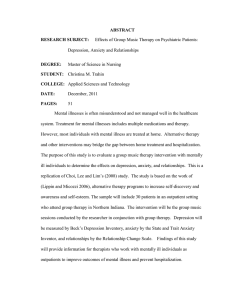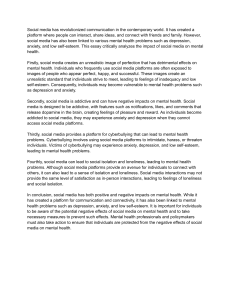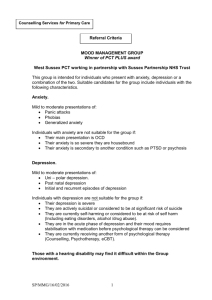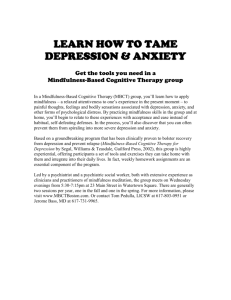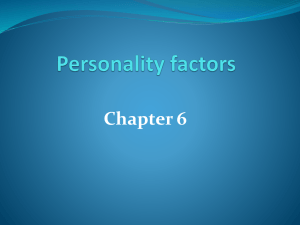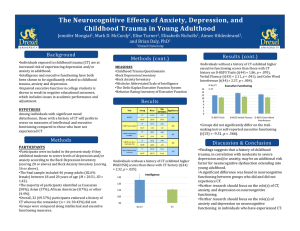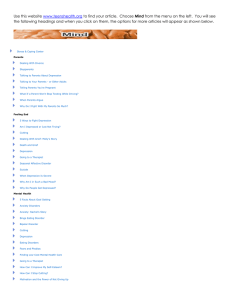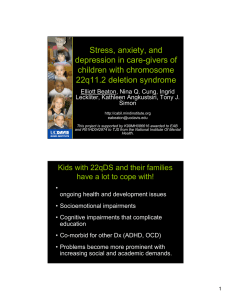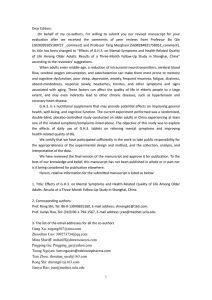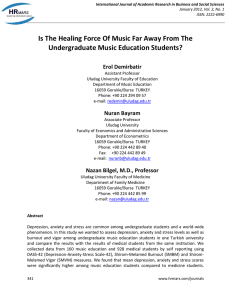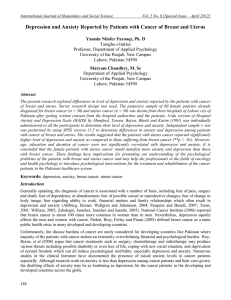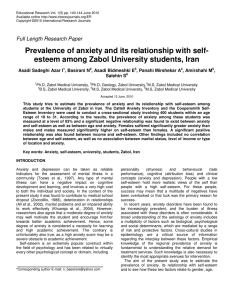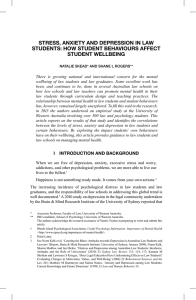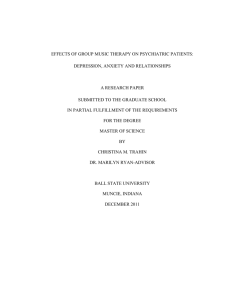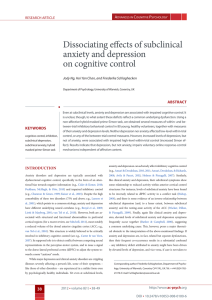The Short-Term Effects of Animal Assisted Therapy on Hospital
advertisement
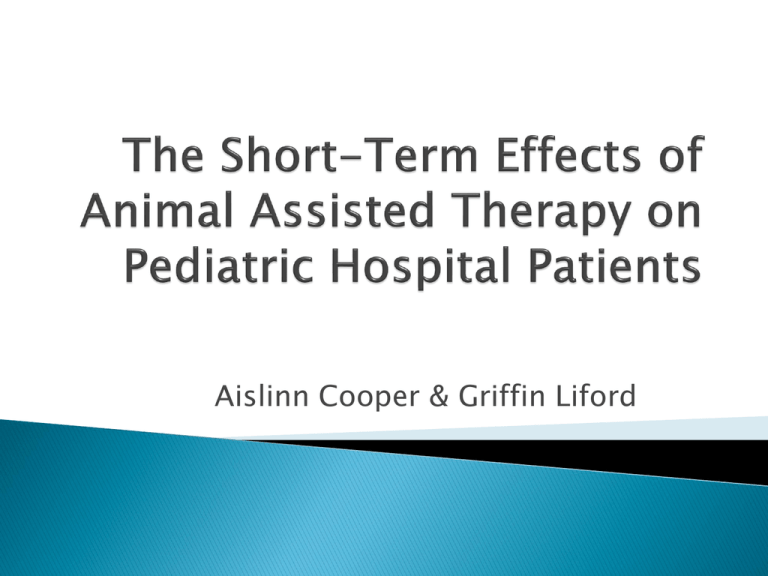
Aislinn Cooper & Griffin Liford Purpose and Types of AAT Animal assisted therapy is designed to promote improvement in human physical, social, emotional, and/or cognitive functioning. (Delta Society). Three major types of animal asissted therapy: -Dolphin assisted therapy -Equine Therapy -Pet Therapy Animals first used therapeutically by the Quakers in 1792 at the York Retreat. Notable psychologists used own pets: Freud: Jo-Fi Boris Levinson: Jingles Coined term ‘pet therapy’ (1964). Decrease in anxiety & depression levels in elderly patients (le Roux and Kemp, 2009) Same decrease in anxiety and depression in children (Woolley, 2005) Decrease in children’s heart rate, positive affect enhanced and parents rating of mood improved (Kaminski, Pellino & Wish, 2002) Increase in self-esteem for female juvenile offenders taking care of cats (Cobaleda-Kegler, 2006) Study looking at the effects of the humananimal bond on socioemotional functioning of juvenile offenders (Terpin, 2004) More research is needed on the effects of short term interactions with animals as opposed to long term interactions that occur in pet relationships (Terpin, 2004). Patients who have short-term interactions with a therapy animal will show improvements in emotional well-being with regards to depression, anxiety and self esteem. Participants: ◦ Sample of inpatient pediatric hospital patients N=18 (9 Male/9 Female) Age 8-17 Procedures: Informed Consent (Parents) / Assent (Children) Given first set of questionnaires Interaction with therapy animal Record observational data at this time Given second set of questionnaires Debriefed Measures: ◦ Reynolds Child Depression Scale (William Reynolds) ‘I feel that no one cares about me’ (almost never – all the time) ◦ Rosenberg Self-Esteem Inventory (Morris Rosenberg) ‘I like myself’ (strongly agree – strongly disagree) ◦ State Anxiety Inventory for Children (Spielberger, et al.) I feel… (very scared, scared, not scared) Measures: ◦ Observational Data Sheet Overall Quality of Interaction Behavior of Child Behavior of Animal Other Observations Dependent t-test (Pre & Post) ◦ Depression: Dependent t (17) = .93, p = .36 ◦ Anxiety: Dependent t (17) = .50, p = .62 ◦ Self-esteem: Dependent t (17) = .09, p = .93 Affect of Child 4.5 4 Reported Affect* 3.5 3 2.5 2 1.5 1 0.5 0 Before *Determined through qualitative observation (1-5 Likert Scale) After Time Dependent t (17) = 3.7, p = .002 Family members seemed to benefit just as much as the children did from the animal interaction. Interaction with the dog handler also seemed to improve the mood of both the child and the family members present. There was a notable increase in the affect of the children following the interaction with the therapy animal. Did not find the improvements in the emotional well-being as expected from the results of research on long-term effects ◦ le Roux and Kemp (2009), Woolley (2005) and Cobaleda-Kegler (2006) It can be argued that with children in particular, physical displays of emotion can be more telling than directly asking a child to reflect on his/her feelings. No control group Knew what we were studying Effects of novelty of visit wearing off Dependent on WAGS & hospital Small sample size Benefits of AAT on parents/family members If short-term AAT was shown to be beneficial not only to the children, but to their family members as well, a stronger case could be made to utilize it as a means of improving the quality of the hospital stay for the all of those affected. Dr. Karen Frost (University of Louisville) WAGS Kosair Childrens Hospital
